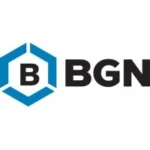Taiwan Semiconductor Manufacturing Co.’s annual Supply Chain Management Forum opens Tuesday in Taiwan, where roughly 100 vendors will gather for signals on the chipmaker’s capital spending trajectory. The event carries unusual weight this year as suppliers await details on expansion plans for TSMC’s 2-nanometer and A16 process technologies.
TSMC’s capital expenditure stands at approximately NT$1.26 trillion ($40 billion to $42 billion) for 2025, though some analysts project outlays could reach $50 billion as artificial intelligence demand accelerates. The chipmaker has shifted from awarding projects with one-year lead times to planning two years ahead, reflecting more aggressive expansion schedules.
The A16 process, scheduled for high-volume manufacturing in late 2026, introduces backside power delivery technology that requires new manufacturing capabilities including ultra-thin wafer processing and improved silicon through-hole precision. This marks a departure from traditional power delivery methods and will demand fresh equipment investments across the supply chain.
Production of 2nm chips is ramping faster than earlier projections. Monthly wafer capacity is expected to hit 40,000 units by year-end, then climb 50% by mid-2026 before doubling to 80,000-90,000 wafers by late 2026. Consumables suppliers report 2nm adoption accelerated sharply in the fourth quarter, driven by demand beyond Apple’s typical early adoption.
Factory contractors including United Integrated Services, Marketech International, and L&K Engineering stand to benefit from increased order visibility. TSMC’s German plant projects are beginning revenue recognition this quarter, ahead of initial forecasts.




